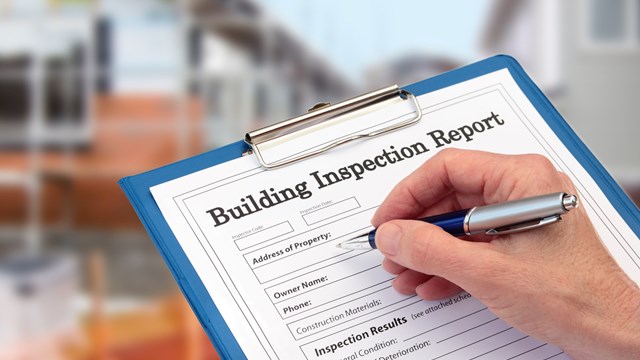In any business, much of the decision-making process is based on the bottom line—is there more money coming in or going out? How do this year's profits compare with last year's? Are we getting the best deals from suppliers and vendors?
While homeowner associations aren't necessarily concerned with making huge profits, they are businesses, and all businesses want to operate in the most economical way possible and hopefully increase in value as time goes by. In order to maintain a high level of operating efficiency and increase the worth of your HOA, examination of the bottom line is crucial, just like it is with big businesses. Whether you are a board member, manager or shareholder, looking closely at your own HOAs spending habits and making efforts to decrease or eliminate a few classic "money drains" you can greatly reduce the amount it takes, monetarily speaking, to run your co-op or condo.
There are at least three major areas of spending in an HOA budget that, with a little investigation, offer many opportunities to "trim the fat." They are: energy and water, administration and purchasing.
Energy and Water
Most people are used to grumbling about the cost of gas these days. Bills seem to be a little higher every month, so if you are able to find ways money can be saved in this particular area, be prepared to be your HOA's hero. It's surprisingly easy to cut costs when it comes to energy, in fact. Peter Grech, a building superintendent with decades of experience under his belt and the president of the Superintendents Technical Association (STA) of New York City says examining fuel costs is really the first stop when looking to eliminate wasteful spending.
"In a lot of cases, equipment isn't running properly in a building's heating system, and that wastes huge amounts of money. If repairs do need to be made, it's important to do the job right the first time. If you have to add something or do more work later, that's more money you have to spend."
New Jersey is, like most states, involved with the federal government's "Energy Star" campaign.
The Energy Star label is affixed to over 38 categories of products including heating and cooling equipment, lighting, roofing, doors and windows. These qualified products are between 10 and 30 percent more efficient than other products of the same kind that just meet the minimum government standards, and most are far more efficient than that. The label guarantees "high quality, low-cost operation" and that is the secret to keeping energy costs down. The average individual spends around $1,300 on energy bills per year, and by utilizing Energy Star qualified products, that same individual can save an average of $400 each year. You can visit www.energystar.gov for more information on where to find products and services that have earned the Energy Star label.
The other half of the energy equation is water. Wasting water is not only bad for the environment, but is what many building managers know as "the silent budget-killer." A leaky toilet can cost hundreds of dollars a year—and you may not even know you have a leak.
Tamesha Harper is on the customer advisory panel of New Jersey United Water, a company that serves over 750,000 people in Bergen and Hudson counties alone, and says that there are several ways to save a lot when it comes to water.
Paying attention to water meters and reporting any metering abnormalities can save you money that otherwise would've gone down the drain (literally) with wasted water, and can conserve water and lessen our impact on the environment.
Another approach that can save both money and environmental points on a larger scale is what's called "xeriscaping," or designing lawns and gardens with consideration towards the natural landscape of a region.
According to Mark Klama of Lawnworks in Florence, "You can get away with using a lot less pesticides with xeriscaping because [the method] incorporates a large number of plants that are native to the area to begin with." Not only is that the eco-friendly thing to do, but it costs you less in chemicals and upkeep.
Administration
If you were to illustrate your HOA's budget in pie-chart form, it would be easy to see that a huge portion of budget spending is taken up by labor costs. Depending on the size of your building or development, administration costs will vary. A development with six buildings and 300 units certainly takes more manpower to operate than a single building with six units—but how much more, exactly? While it's a very tough—and often unpopular—decision to cut back on staff hours, or even whole positions, the truth is that your HOA probably does not need a half-dozen gardeners to tend your single courtyard, or a small army of maintenance people. Making some executive decisions about staffing, hours, and overtime can help trim unnecessary excess spending from your budget as well.
That said, if eliminating jobs is unnecessary (or just too painful) there are other ways to reduce labor costs. Cutting down on overtime and improving record keeping can help do this.
"Involving the staff in the decision making process is always a good idea, for two reasons," Grech says. "First of all, they probably know something you don't, and second, when they're involved they become part of a team. They're more likely to turn off lights and faucets and so forth. Involving them changes their attitude and they function more as team players."
As in most decision-making processes, common sense also comes in handy when examining labor costs. If your building has a swimming pool, for example, and the board is allocating funds for weekly pool cleanings to get rid of excess algae, or is constantly hiring a technician to come in and handle chronic drainage trouble, perhaps it's time to look at the pool itself. Are you using the right chemicals in the proper amounts? Are your tenants doing their part to keep the facility clean? Examining the problem and treating the root cause rather than the symptoms is an essential first step—don't pick up the phone to hire yet another contractor before you establish that you truly need one.
Purchasing
It's necessary to stock plenty of cleaning supplies and spare parts in your building's maintenance closet, but do you really know what you've got and how much you actually use? If just automatically do all your ordering with a standard order sheet once a month without any kind of inventory control, now might be a good time to take a trip down to the closet yourself and see exactly what you've got on hand and how much extra you've accumulated.
According to Syed Haque, an accountant specializing in co-ops and condos—as well as a board member and former treasurer of his own condo association—"Most loss and waste is not a result of sloppy organization or accounting. Rather, it's caused by ineffcient ordering of materials and occaisional internal theft, such as materials ordered for personal use or resale rather than for legitimate use by the association."
"In actuality, however," Haque explains, "condos and co-ops have very little tangible inventory; losses are more often caused by employees or tenants taking small quantities of supplies, which can go easily unnoticed and are very difficult to account for."
With all these areas of possible improvement, it's hard to know where to start. A good way to get a complete assessment of your HOA's standing (before you start ripping out your plumbing or dismantling the roof) is to do an energy audit.
An energy audit is a systemized approach to measuring, recording, and evaluating the operating performance of a building or building system with the intention of improving the performance. In other words, an energy audit lets you know exactly where you stand and what you can do to improve.
"Hiring a professional energy auditor is probably a good idea, depending on the size of your building," says Grech. "The professionals have databases they use to compare your building with other buildings—they're able to say, 'Here's the average, and here's you.'"
Energy audits take only a few hours to complete and don't have to cost much. In New York, for example, the NYSERDA program provides free energy audits and weatherization audits to residents and businesses. New Jersey may be on board for a similar program, but until one is implemented, there are other resources available to help you in your quest for low-cost operation of your HOA.
In March of 2001, the New Jersey state Board of Public Utilities approved the New Jersey "Clean Energy Program," a program that helps individuals and businesses achieve the highest level of energy-efficency within their homes and businesses. By offering rebates on energy-efficient heat pumps and air conditioners, as well as special offers on solar-power alternatives, the Clean Energy Program helps you cut costs and do your part to reduce environmental stress. Go to www.njcleanenergy.com to do an online energy assessment and find out more about the special offers available.
Whether you complete a full energy audit or just take time to assess the details of your HOA spending habits, there is no doubt you'll find ways to cut costs. Residents may disagree about the kind of shrubs to plant or whether you need a new swing-set, but everyone agrees that saving money is a good thing.
Mary Fons is a freelance writer and frequent contributor to The New Jersey Cooperator.







Leave a Comment